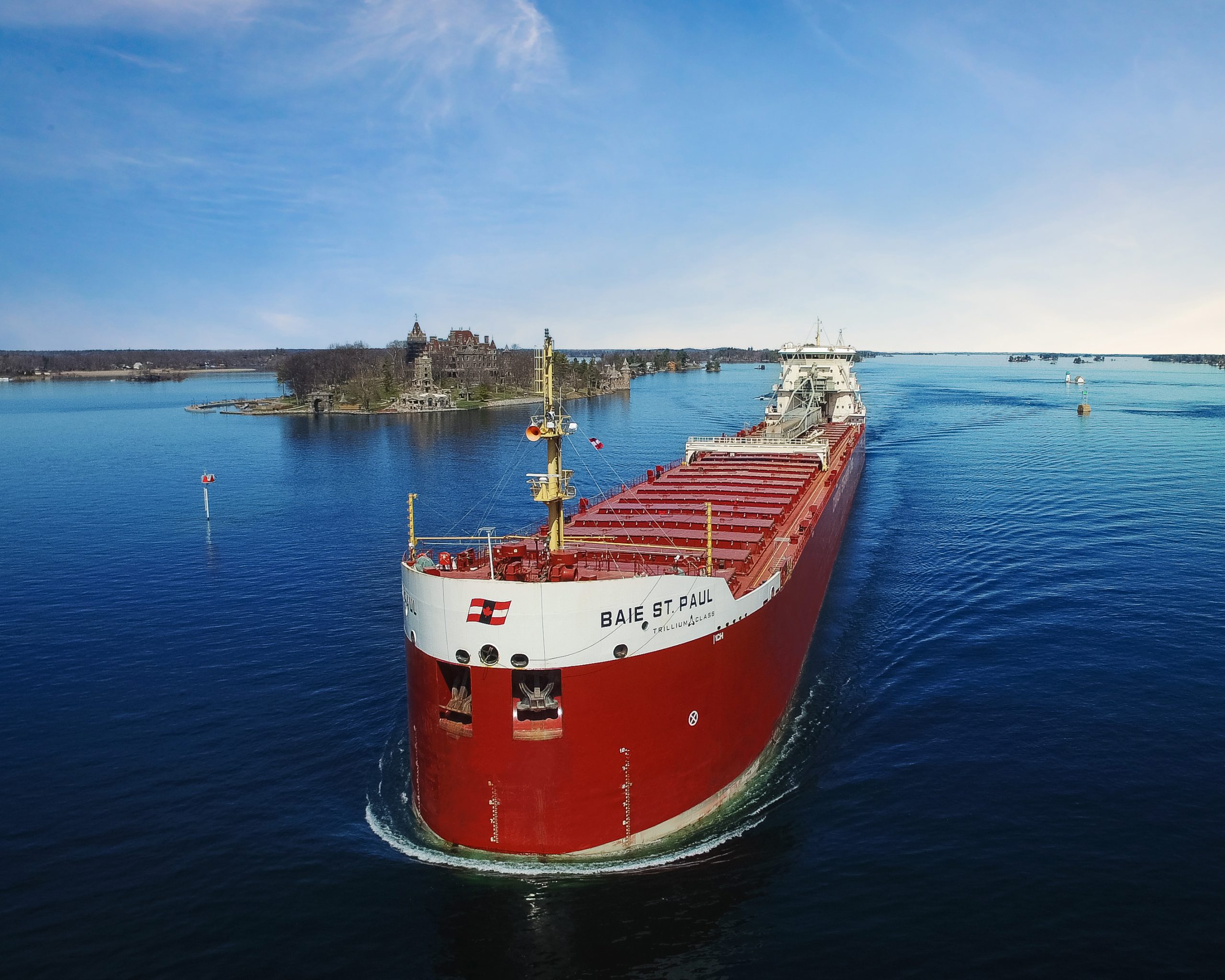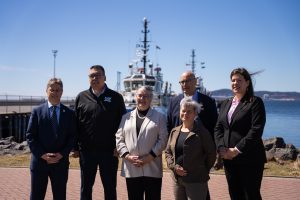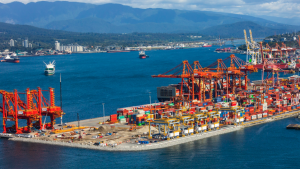The dominant themes for Canadian Great Lakes-Seaway shipping in 2023 continued in June, with overall tonnage remaining consistent with last year, and with significant volumes of western Canadian grain, cement, steel slabs, and iron ore transiting the system. In total, approximately 12 million tonnes of total cargo traffic have now transited the seaway system for the year to date, which is virtually identical to the same period in 2022.
“We take great pride in the central role the St. Lawrence Seaway plays in the movement of key cargos, which is reflected in our responsiveness to client needs, to changes in various industries, and to new developments or emerging trends,” said Terence Bowles, President and CEO of the St. Lawrence Seaway Management Corporation (SLSMC). “Our system continues to be a vital, adaptable, and reliable part of the supply chain.”
Cement continued to be up year over year by more than 12 percent, highlighting the importance of recent infrastructure upgrades being undertaken at the Port Weller Dry Docks Cargo Terminal. The project is intended to improve the areas of the port that are being used for the handling of cargo from the dockside to the cement trans-loading facility, which in turn will increase capacity in the Niagara ports network in response to rising demand for cement. The project was supported in part through a $5.2 million contribution from the Government of Canada through the National Trade Corridors Fund.
“This vital port enhancement project will enable Canadian businesses like ours to be more competitive in the global market, and will also maximize efficiencies for local users,” noted Steve Martin, Director of Sales and Business Development for Stubbe’s, a company specializing in precast cement structures for residential and industrial use.
To date, more than 3.1 million tonnes of Canadian grain has been transported through the system, representing an overall increase of almost 24 percent from 2022. The increased demand is attributed in part to Canadian producers addressing global needs as the war in Ukraine continues.
“Movement has been strong as Canada continues to export large volumes of corn to the European Union who look to the Great Lakes for a reliable supply to meet their domestic need for feed ingredients.” said Carsten Bredin, Vice President of Grain Merchandising at Richardson International. “Exports of wheat and durum from Thunder Bay continue at a strong pace as affordable ocean freight rates are attracting additional demand.”
As noted, iron ore and steel slabs have also seen an overall increase in shipping activity, with total iron ore traffic through the system being more than 2.3 million tonnes (an increase of almost 9 percent year over year), and 193 thousand tonnes of steel slabs traveling through the system – more than ten times the amount as last year.
At the halfway point in the navigation season, HOPA Ports is showing consistent growth in the agri-food sector, as well as steel and other aggregates supporting the construction and manufacturing industries.
“Since the beginning of the shipping season, more than 3.7 million metric tonnes of cargo have transited the Port of Hamilton,” said Larissa Fenn, VP of Corporate Affairs at HOPA Ports. “Steel imports have increased by 43% over the same period last year, delivering more than 85,000 MT for the month of June in Hamilton. Across our three grain terminals, more than 192,000 MT was exported last month, a 15% increase over May totals. Cement and other aggregates continue to show steady results at the Port of Oshawa; cement reporting a 27% increase over the same period in 2022. These numbers shine a spotlight on the remarkable performance we continue to see across our port network, contributing to the growth and prosperity of these industries essential to our regional economy, while driving progress and a bright future for our communities.”
“Investment and upgrades have been a major theme in our marine shipping industry, whether it’s the upgrades at the Port Weller Dry Docks Cargo Terminal, the Seaway’s own winter works maintenance program,” noted Terrence Bowles. “The commitment to continuous improvement is one of many reasons why marine shipping will continue to play a central role in our country’s pursuit of sustainable economic growth, and I’m excited for the future.”
(Photo from Canada Steamship Lines)





